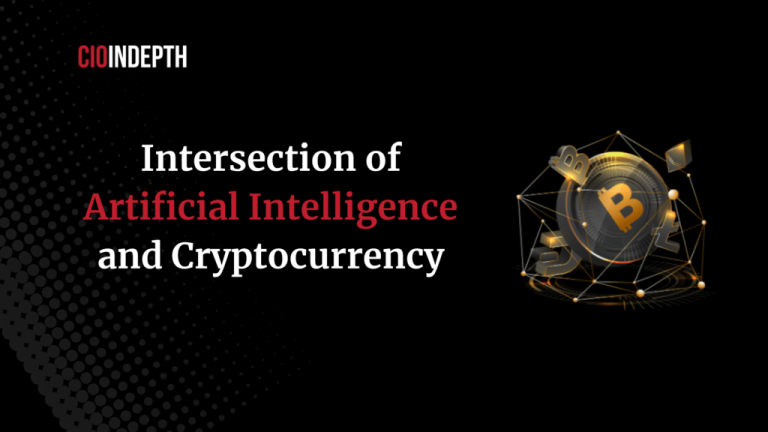Bridging the AI Execution Gap: Uncovering Why 80% of Projects Fail to Launch
Artificial Intelligence: The Execution Gap
Investment in artificial intelligence (AI) is reaching unprecedented heights, with IDC anticipating a global expenditure on AI and GenAI to double to $631 billion by 2028. However, despite the significant budget allocations and enthusiasm from executives, many organizations encounter difficulties in transforming their AI ambitions into real-world success.
The Challenges of AI Implementation
The ModelOp 2025 AI Governance Benchmark Report, which gathered insights from 100 senior AI and data leaders at Fortune 500 companies, highlights a disparity between aspirations and actual execution. Although over 80% of enterprises have more than 51 generative AI projects in the proposal stage, only 18% have managed to deploy more than 20 models into production. This significant execution gap poses one of the greatest challenges for enterprise AI today, as many generative AI projects take between 6 to 18 months to go live—if they make it to production at all.
This situation results in delayed returns on investment, frustrated stakeholders, and diminished confidence in AI initiatives within organizations.
The Root Causes
The primary barriers hindering the scalability of AI are not of a technical nature; rather, they stem from structural inefficiencies within enterprise operations. The ModelOp benchmark report identifies several issues that contribute to what is referred to as a “time-to-market quagmire.”
- Fragmented Systems: 58% of organizations identify fragmented systems作为 the main obstacle to adopting governance platforms. This fragmentation results in silos, where various departments utilize incompatible tools and methods, complicating consistent oversight in AI initiatives.
- Reliance on Manual Processes: 55% of enterprises continue to depend on manual systems—including spreadsheets and emails—for managing AI use case intake. This reliance on outdated methods creates bottlenecks, raises the likelihood of errors, and hampers the scalability of AI operations.
- Lack of Standardization: Only 23% of organizations implement standardized intake, development, and model management processes. This absence of structure leads to each AI project being treated as a unique challenge requiring custom solutions and extensive coordination among various teams.
- Inadequate Enterprise-Level Oversight: Merely 14% of companies perform AI assurance at the enterprise level, which increases the risk of duplicated efforts and inconsistent management. The lack of a centralized governance framework often results in organizations redundantly addressing the same challenges across different departments.
A Shift in Perspective: Governance as an Accelerator
A transformation is occurring in how enterprises perceive AI governance. Rather than viewing it merely as a compliance burden that impedes innovation, progressive organizations now see governance as a vital enabler of scalability and speed.
The data from the ModelOp benchmark reflects this shift in organizational structure: 46% of companies assign accountability for AI governance to a Chief Innovation Officer—over four times the number that assigns it to Legal or Compliance. This strategic repositioning indicates a growing awareness that governance can facilitate innovation rather than just serve as a risk management tool.
Financial backing for AI governance further underscores its significance. The report states that 36% of enterprises have earmarked at least $1 million annually for AI governance software, while 54% have dedicated resources for AI Portfolio Intelligence to monitor value and ROI.
Characteristics of High-Performing Enterprises
Organizations that successfully close the ‘execution gap’ exhibit several common traits in their AI implementation strategies:
- Standardized Processes: Leading enterprises implement standardized intake, development, and model review processes from the onset of their AI initiatives. This consistency eliminates the need to reinvent workflows for each project and ensures that all stakeholders are clear on their roles and responsibilities.
- Centralized Documentation: Successful organizations maintain centralized documentation and inventory for their AI assets, preventing fragmentation across disconnected systems.
Inventories provide transparency regarding the status, performance, and compliance of every AI model. High-performing organizations incorporate automated governance checkpoints throughout the AI lifecycle, ensuring that compliance requirements and risk assessments are addressed systematically, rather than as an afterthought.
Leading enterprises ensure complete traceability of their AI models, which includes the data sources utilized, training methods, validation outcomes, and performance metrics.
Measurable Impact of Structured Governance
The advantages of implementing comprehensive AI governance go beyond mere compliance. Organizations that embrace lifecycle automation platforms report remarkable enhancements in operational efficiency and overall business results. For instance, a financial services firm highlighted in the ModelOp report experienced a 50% reduction in time to production and an 80% decrease in issue resolution time following the adoption of automated governance processes. These advancements lead to expedited time-to-value and heightened confidence among business stakeholders.
Companies with strong governance frameworks can manage a significantly higher number of models simultaneously while ensuring oversight and control. This scalability allows organizations to engage in AI initiatives across various business units without straining their operational resources.
The Path Forward: From Stuck to Scaled
Industry leaders emphasize that the gap between AI ambitions and execution is bridgeable, but it necessitates a change in mindset. Instead of viewing governance as a necessary burden, organizations should recognize it as a facilitator of AI innovation at scale.
Immediate Action Items for AI Leaders
Firms eager to overcome the “time-to-market quagmire” should focus on the following strategies:
- Audit Current State: Assess existing AI endeavors to identify fragmented processes and manual bottlenecks.
- Standardize Workflows: Establish uniform processes for AI use case intake, development, and deployment across all business units.
- Invest in Integration: Implement platforms that unify diverse tools and systems within a cohesive governance framework.
- Establish Enterprise Oversight: Develop centralized visibility into all AI initiatives, complete with real-time monitoring and reporting capabilities.
The Competitive Advantage of Getting It Right
Organizations that tackle the execution challenge can deliver AI solutions to the market more rapidly, scale operations more efficiently, and secure the trust of stakeholders and regulators. Conversely, enterprises that persist with fragmented processes and manual workflows risk falling behind their more organized competitors. Achieving operational excellence is not merely about efficiency; it is essential for survival.
Data indicates that enterprise investments in AI will continue to rise. Thus, the pressing question is not whether organizations will invest in AI, but whether they will develop the necessary operational capabilities to realize return on investment. The chance to lead in the AI-driven economy has never been more significant for those willing to view governance as a facilitator rather than a hindrance.
Teachers in England Given the Green Light to Use AI
Education professionals in England have been authorized to incorporate artificial intelligence (AI) tools into their teaching methodologies. This move aims to enhance educational outcomes while ensuring that educators have the necessary resources to engage students more effectively.
AI’s Influence in the Cryptocurrency Industry
The integration of AI technologies is significantly reshaping the cryptocurrency landscape. It is offering innovative solutions that are driving efficiencies, enhancing security, and improving market predictions within the sector, paving the way for a more robust trading environment.
Sam Altman, OpenAI: The Superintelligence Era Has Begun
Sam Altman, a prominent figure in AI development, asserts that we have entered a transformative era defined by superintelligent systems. This advancement could lead to groundbreaking changes across various fields, highlighting the urgency to address ethical implications and governance surrounding AI technology.
Magistral: Mistral AI Challenges Big Tech with Reasoning Model
Mistral AI is positioning itself as a competitive alternative to major technology firms by introducing advanced reasoning models. Their innovative approach is anticipated to push the boundaries of what AI can achieve, fostering more sophisticated applications and potentially redefining industry standards.
Latest Developments in Artificial Intelligence
The realm of artificial intelligence continues to evolve, with various applications emerging that illustrate its transformative potential:
- The Role of Machine Learning in Enhancing Cloud-Native Container Security: This evolving technology is critical for bolstering security measures, with significant viewer engagement.
- Innovative Machine Learning Uses Transforming Business Applications: Here, machine learning is redefining operational efficiencies across finance and logistics sectors.
- AI and Bots Allegedly Used to Fraudulently Boost Music Streams: This controversy raises important conversations about ethics in AI deployment within the music industry.
- The Benefits of Partnering with Outsourced Developers: Exploring advantages that come with strategic partnerships in the realm of AI development.
Stay informed about the latest advancements in technology and how they’re shaping various industries.
AGI and Artificial Intelligence Companies
As we step into the superintelligence era, OpenAI’s Sam Altman emphasizes the transformative impact of advanced AI technologies on our future.
Innovations in AI
Magistral is making waves by challenging big tech with its new reasoning model, Mistral AI, which aims to redefine capabilities in artificial intelligence.
The AI Blockchain: An Overview
This forthcoming article will explore the intricacies of the AI blockchain, shedding light on its true potential and how it integrates with current AI developments.
Stay Updated
Subscribe to receive our premium content and the latest updates in technology straight to your inbox.
Explore More
For additional insights, visit our various sections on Applications, Companies, Deep Learning, Ethics, and more.
Our Network
Explore more from our network, including Developer, IoT News, Edge Computing News, and much more that delves into current technological advancements.
Company Size
Company Sector
Country
Permissions
By providing your email address, you accept our Terms and Privacy Notice.






